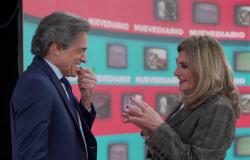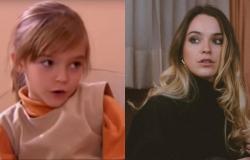I met Valeria Erlijman one night in La Plata, during an edition of the Plurinational Meeting of Women, Trans, Transvestites. We accompanied our daughters, students from public secondary schools, to that massive and democratic event during the Macri times. We stopped for three days in an old school and the sleeping bags, the guitar playing, the green scarves spinning in the air, the puffed-up assemblies discussing the use of inclusive language and fat activism gave warmth to that cold October.
We crossed paths again a couple of times at a post-pandemic meeting with acting, visual arts and wine that she organized on the sidewalk of her house and one summer, accompanied by our families, on the beaches of Costa del Este. A few weeks ago, Erlijman, who is a psychiatrist and psychoanalyst, presented a book with her photographs. Is called Complicities, games and pleasures and people were able to see it during the party that was organized in Hasta Trilce.
The book contains images that the author took and treasured throughout her life to save them from oblivion. Her tools were a Kodak Brownie Fiesta 3, which was her first camera, and a Pentax K1000, and the Nikon D40, D3200 and D7200.
There is her husband, Victor Raul Verapreparing the barbecue on the terrace, playing or sleeping with the daughters, Malena and Catalina, the girls in the bathtub or the wrinkled feet of one of them when she got out of the water, a young hand and an old one tightly holding each other, collecting them with a bucket of the grapes on the vine, the knowing smiles of the sisters with their striped sweaters, the ladder and the fratacho, the colored lamps that illuminate the night, the grass and the water next to the little shoes waiting for the three kings.
It is the expression of the affection of those bodies, the flow of affection in the open air and in the refuge of the home, in two dimensions, which seem to invite the viewer to participate. Erlijman created this book during Raúl’s illness and presented it almost simultaneously with the final departure of his man.
In the prologue, Paula Dobertiphotographer and curator of the book with Deborah Kirnossays that the selection of the hundreds of photos from which he started was complex “due to the need to give significance to what for Erlijman is non-negotiable: his particular way of protecting the instantaneous, the unrepeatable, the ephemeral and at the same time the everyday, the usual, the usual.”
The book is not a chronological album. Doberti points out that “it has a moving narrative, which invites us to read it in different directions, providing us with the opportunity to go back to remember situations, to compare actions and emotionalities.”
A colleague and friend of Valeria, Myriam Soae, rescues the concept of sublimation to talk about the images created, appealing to Freud’s idea that the object is required to be suppressed, subtracted and isolated to turn it into a work of art. The drive could be satisfied through those paths without censorship, without asking anyone’s permission.
Soae points out that the author of Complicities It is “a lucid camera, a voracious eye that goes after what we do not see, its photographs reveal absent details, bringing them to light, giving them life, brightness, movement, color, texture. He has the ability, the gift, the art, of perpetuating tenderness with an image. Nuance the pain with the gradations of light, freeze the celebrations to eternalize them, because it takes special care to ensure that the everyday becomes a celebration, it rescues the ephemeral to transform it into the transcendent. Each of us, the spectators, will feel watched by some detail of the work. They could be the black eyes that open the book, the sweet laughter of the blonde girl, the intimate play of the older girl, the wrinkled finger of the grandmother, the happy teeth of this curly woman, the letters of the book that say the pins in the eyes, the yellow light, the sparks of the fire, the flesh, the bone of the flesh, the little shoes, the old woman’s astonishment at the violin and this is how we will enter the image through that movement, looked at by what we have to do , enabled by the work, there is a polyphony of smiles. It is about this object recreated, retained, recovered through photography, being released, to enter into new drifts, other avenues that will bring new joys while crossing intimate thresholds.”
Today, when everything is photographed, everyone and everything, without criteria or hierarchy, to entangle the observer who is overwhelmed by the quantity, who seems to want infinity until he becomes narcotized, choosing the scene in the Erlijman way, connecting emotionally, seeking the Better light makes you distinguish and value the gesture and the detail without overwhelming you.
In the epilogue, the friend Laura Andreoni he praises the ineffable. “We present a previous event, what will happen next, an off-camera event. There is something oblique that invites us to both stay and leave the scene,” he writes.
Go this column on. tribute to another unavoidable woman, Sara Faciocreator in 1985 of the San Martín Theater Photo Gallery, loving companion of Maria Elena Walsh and great Argentine photographer.
LH/MF






